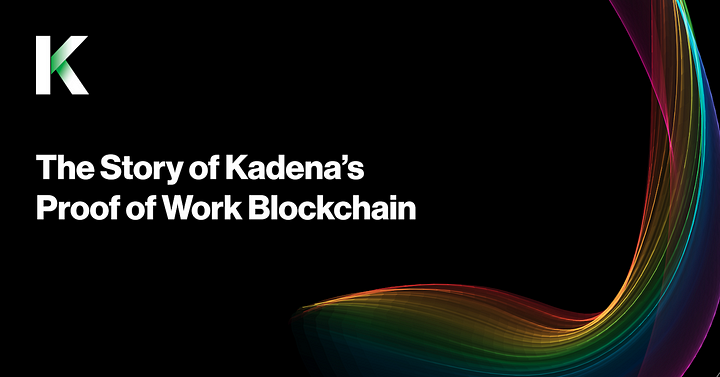The Story of Kadena’s Proof of Work Blockchain
Since its inception in 2016, Kadena has continuously innovated and achieved tremendous milestones, making it the first and only Layer-1 blockchain that has managed to permanently address scalability while preserving the power of Proof-of-Work (PoW) security and decentralization. It is the only Layer-1 blockchain to have solved the Blockchain Trilemma. In 2022 alone, Kadena’s list of feats include but are not limited to: the launch of its Kadena Eco $100 million grant program, the first decentralized gas free exchange; the launch of its wrapped KDA (wKDA) on the Ethereum network; its token, KDA, being listed on major exchanges such as Binance, Gate and OKX; and the launch of Marmalade, Kadena’s NFT platform that offers 100% on-chain transactions, high-quality provenance, low gas fees, and shared ownership that can span platforms.
Kadena’s success originated with the inspiration of its two founders, Stuart Popejoy and William Martino, who were driven by the goal of creating a scalable and secure cryptocurrency.
Popejoy, originally from the Bay Area, has worked in the tech industry since the 1990s. He started his career as a programmer at Apple, and made the move to New York in 2001 where he spent the next 15 years building trading and routing systems for brokerages on Wall Street. He joined J.P. Morgan Chase in 2011, where he developed electronic trading and portfolio strategies and then led the bank’s new products division, including development in blockchain and smart contracts.
Throughout his career at J.P. Morgan, Popejoy worked with and became close friends with his colleague William Martino. Martino originally led the development of J.P. Morgan’s Blockchain Research Group which invented Juno, a blockchain prototype for international currency transfers. Prior to J.P. Morgan, Martino assisted in founding both the Security and Exchange Commission’s Quant Unit and Distributed Ledger Technology working group.
Together, Popejoy and Martino built a high speed blockchain for the first iteration of J.P. Morgan’s inaugural digital currency, JPM Coin. Popejoy and Martino were looking to find ways to make instant transfers of assets between multiple banks and to offer next-generation treasury services. J.P. Morgan was not ready to take the plunge into the blockchain world until a couple of years later.
“Early on, crypto’s path to the mainstream remained unclear, because the technology wasn’t ready,” said Popejoy in a recent podcast interview. “To some extent, that holds true today.”
In 2016, Popejoy and Martino left J.P. Morgan — and that was the beginning of Kadena.
Popejoy and Martino’s goal was to create a scalable cryptocurrency with the security at the forefront. They brought on advisors such as renowned cryptographer Stuart Haber, whose work on timestamping helped inspire the creation of today’s blockchain systems. Along with his colleague, Scott Stornetta, their research has been cited in the Bitcoin whitepaper by Satoshi Nakamoto, which outlined the basic structure of Bitcoin’s PoW blockchain.
Haber provided insight to Kadena’s team in the buildout of its smart contract language, Pact, and the first audit of the Kadena blockchain.
In 2020, Kadena successfully launched its public blockchain along with smart contract capabilities. Kadena built the first scalable Proof of Work (PoW) blockchain, which first launched as ten parallel chains running on a single network. One year later in 2021, the Kadena team scaled to twenty chains. “We designed it to be able to handle use-cases we saw at J.P. Morgan, but we also wanted to make it easy enough that anybody, including non-programmers, could write safe smart contracts in it,” said Popejoy.
The Kadena network can increase its capacity to handle high volume throughput as needed. What this means is that Kadena is able to combine multiple parallel blockchains to achieve a PoW consensus, resulting in increasing throughputs and scalability without compromising decentralization and security, two issues that Proof of Stake blockchains constantly face.
Today, Kadena is focused on fueling mainstream adoption with the vision of bringing Kadena’s technology to the masses. In February 2022, Kadena launched Kadena Eco, an innovation network for technical builders with the primary objective being to raise ecosystem funds to encourage development on Kadena and expand the ecosystem to gaming, Metaverse, NFTs, Web3, DeFi, and DAO companies and projects with proven business models.
Kadena believes in the potential of blockchain to revolutionize how the world interacts and transacts. To realize this vision, Kadena has reimagined blockchain technology and its connective ecosystem from the ground up.

